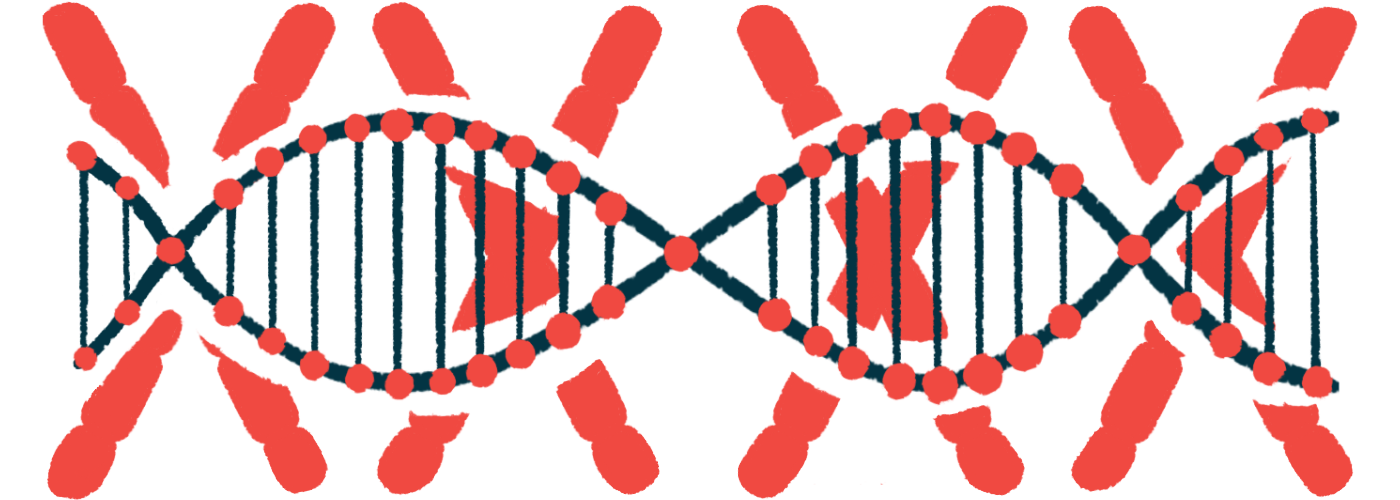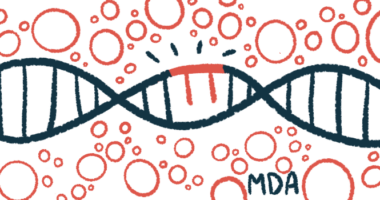#MDA2022 – Gene Therapy SRP-9003 Safely Helping LGMD2E Children in Small Trial

The investigational gene therapy SRP-9003 was well tolerated overall and improved measures of physical functioning for up to three years among children with limb-girdle muscular dystrophy type 2E (LGMD2E) in a small clinical trial.
“The observed durable treatment effect provides proof-of-concept, and supports our further clinical assessment of gene [therapy] with LGMD2E,” Louise Rodino-Klapac, PhD, chief scientific officer for Sarepta Therapeutics, said in a talk at the Muscular Dystrophy Association (MDA) 2022 Annual Meeting.
Her presentation was titled, “Safety, Beta-sarcoglycan Expression, and Functional Outcomes from Systemic Gene Transfer of scAAVrh74.MHCK7.hSGCB in LGMD2E/R4.” The work was led by Sarepta, which is developing SRP-9003.
LGMD2E, also called LGMDR4, is caused by mutations in the gene that provides instructions for making the muscle protein beta-sarcoglycan, leading to muscle weakness that mainly affects the hips and shoulders. SRP-9003 is designed to deliver a healthy version of this mutated gene to muscle cells using a specifically engineered viral vector.
Sarepta is running a pilot Phase 1/2 trial (NCT03652259) at Nationwide Children’s Hospital that enrolled six children with LGMD2E, ages 4 to 13, to evaluate the gene therapy’s safety and effectiveness.
All six children have been treated with a single infusion of SRP-9003: half received a low dose of 1.85E13 vector genomes per kilogram (vg/kg), and the other half a higher dose of 7.41E13 vg/kg. To prevent an immune attack against the therapy’s viral vector, patients also were given immune-suppressing prednisone for one month after the infusion in the low-dose group and for two months in the high-dose group.
Presented data included three years of functional outcomes in the low-dose group, and two-year findings for two patients in the high-dose group. The third high-dose patient died in a motor vehicle accident.
SRP-9003 was found to be well tolerated overall, with most treatment-associated side effects occurring shortly after dosing and considered manageable. Common side effects included nausea, vomiting, and increased levels of liver enzymes.
“We’ve seen no new safety signals since our last readout … All the treatment-related events have been manageable and very early and transient,” Rodino-Klapac said.
Treatment with the experimental gene therapy led to a marked increase in beta-sarcoglycan levels in patient’s muscles after two years, consistent with previously reported data. Levels followed a dose response — that is, beta-sarcoglycan levels were generally higher in the patients given a higher dose of SRP-9003.
“We see sustained expression [of beta-sarcoglycan in muscle] from day 60 to year two,” Rodino-Klapac said.
Notably, analyses also showed increases in levels of other muscle proteins that normally form complexes with beta-sarcoglycan to help its function.
“We’re not only restoring the function of beta-sarcoglycan … but this functional complex, which then leads to the functional improvement,” Rodino-Klapac said.
Functional outcomes in the trial were measured with the North Star Assessment for Limb-girdle Type Muscular Dystrophies (NSAD), which quantifies factors that correlate with activities of daily living, like getting up from the floor and standing on one foot.
In the low-dose group, the mean NSAD score rose from 43 at the study’s start to 48 at three years post-treatment.
In the high-dose group, two-year data showed patients’ mean NSAD score increased from 39 to 41.
“Importantly, in both dose cohorts, we’re seeing improvements that are sustained over time,” Rodino-Klapac said.
SRP-9003 treatment also led to significant reductions in the time in took patients in both dose groups to stand from a seated position and to walk 10 or 100 meters (about 33 or 328 feet).
“In all outcomes … we see a decrease in the time it takes to do an activity,” Rodino-Klapac said. These decreases were generally sustained (or at least a stabilization shown) out to three years in the low-dose group, and to two years in the high-dose patients.
Statistical comparisons against natural history data from Nationwide Children’s Hospital — what would be expected in the absence of treatment — showed a striking difference. Whereas natural history data showed NSAD scores continually decreasing over time, patients treated with SRP-9003 showed an increase. After three years, the average NSAD score was nearly six points better in patients given low-dose SRP-9003 compared with natural history.
“We have demonstrated clinically meaningful improvement of functional outcomes in this exploratory comparison,” Rodino-Klapac said.
Note: The Muscular Dystrophy News Today team is providing coverage of the 2022 MDA Clinical and Scientific Conference March 13–16. Go here to see the latest stories from the conference.







